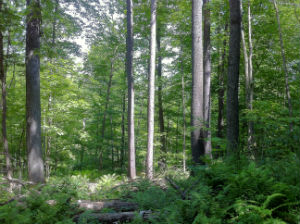
From learning about your woods today to conserving your land for tomorrow, managing your woodlands is an exciting and multi-faceted task. There are many ways to learn about the many services available to assist landowners with technical skills, equipment needs, and professional help and advice. Discover how to manage your woodlands for the most benefit through perusing these webpages, which will walk you through resources offered by the State of Vermont Forestry Division. Read below and look to the menu on the left for a list of in-depth topics and resources.
Your first and most valuable resource for learning about how to manage your land is your local County Forester. Reach out to your County Forester today to have a conversation about all the resources available to you to manage your land for the most beneficial results. A list of all County Foresters and their contact information can be found here.
In the state of Vermont, we depend on private forest landowners to be good stewards of the land, and in so doing, provide Vermont with clean air and water, wildlife habitat, world-famous scenery, and valuable forest products like building material, paper, fuel, and maple syrup. In recognition of the value of providing these benefits, and their commitment to carrying out professional forest management, landowners who enroll in the Use Value Appraisal (UVA) program, or "Current Use," receive the benefit of a lower tax rate on their enrolled land. Learn more about the UVA Program here.
In addition to managing your land for forest products, you may wish to manage your land to maintain wildlife habitat. Landowners can make this a part of their management plan under Current Use. Reach out to your County Forester for more information, and you can also purchase a copy of A Landowner’s Guide to Wildlife Habitat Management for Lands in Vermont from the Fish and Wildlife Department.
